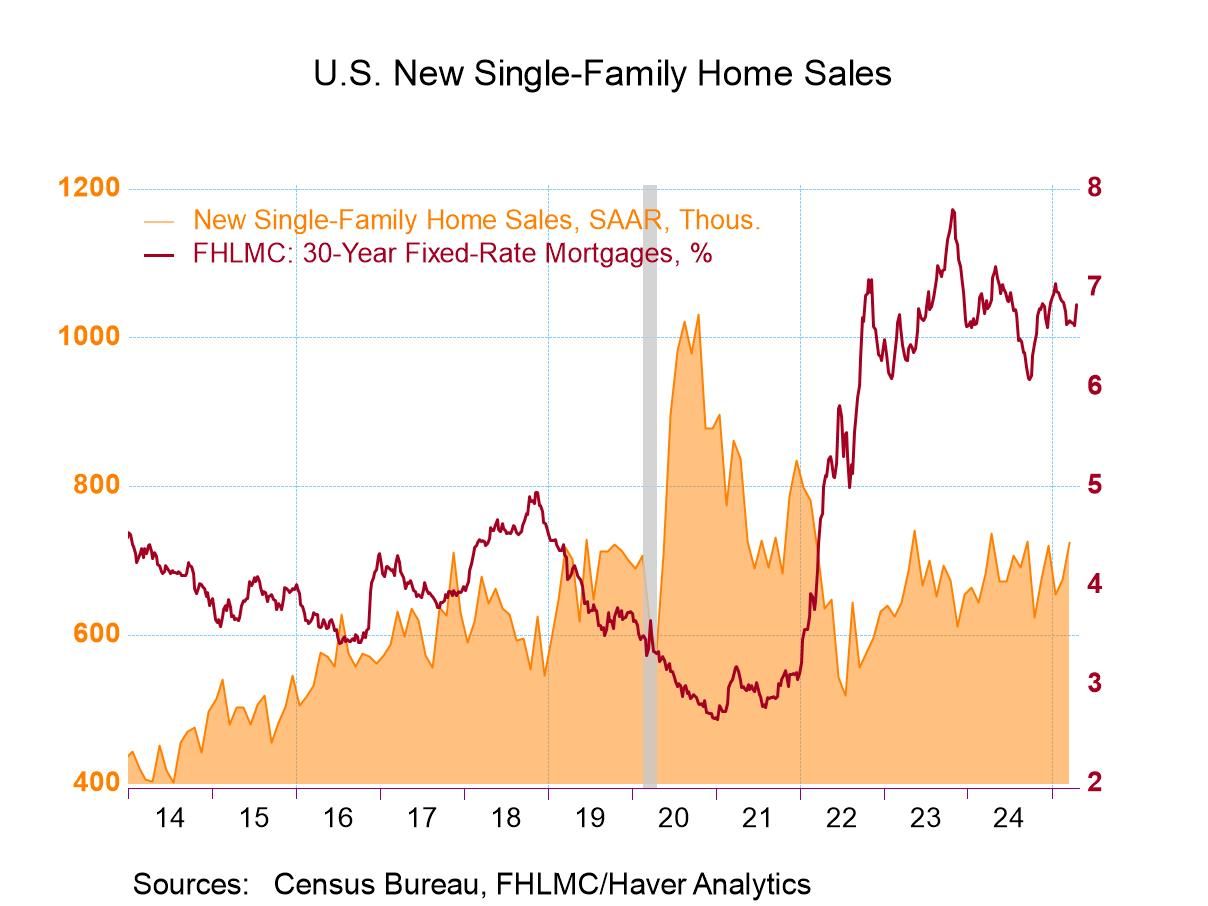 Global| Jun 27 2024
Global| Jun 27 2024Charts of the Week: Global Growth Concerns
by:Andrew Cates
|in:Economy in Brief
Summary
Growing concern about the economic ramifications from France’s upcoming election have been weighing on risk appetite in European financial markets in recent weeks (see chart 1). But the outlook for the broader world economy has also been arguably taking a turn for the worse. Evidence is certainly mounting that global growth momentum is slowing (see charts 2 and 3), that financial conditions are tightening (charts 4 and 6), and that central banks may now be more hesitant to loosen monetary policy in the period immediately ahead (chart 5).
European financial stress Political uncertainty in France has been increasing in recent weeks as result of the decision by President Macron to call a snap election. But financial market stress has also been amplified as a result of heightened concern among investors about the fiscal policy proposals from either a new right wing or a new left wing administration (see chart 1). That concern has been reflected in a higher risk premium on France’s government debt market and, via higher bond yields, a downgrade to the outlook for the domestic economy.
Chart 1: The ECB’s composite indicator of systemic stress: France versus the euro area

Global growth surprises As noted above, the outlook for the broader world economy has also taken a big turn for the worse over the past few days. Citigroup’s global growth surprise index fell into negative territory last week largely thanks to a plunge in the growth surprise index for the euro area (chart 2).
Chart 2: Citigroup’s global growth surprise index

Global growth momentum Disappointing flash PMI data for June from the euro area were one of the key drivers of that plunge in the euro area growth surprise index. But at the broader global level, it was noteworthy too that these flash PMI surveys registered some recent weakness in most major economies, with the notable exception of the US (see chart 3).
Chart 3: Flash composite PMI indexes: 1 month changes

US financial conditions and economic activity Still, incoming US growth data have also been disappointing forecasters’ expectations over the past few weeks. And, via some widening in corporate bond market spreads, this has accompanied tentative evidence to suggest that US credit market conditions have been tightening.
Chart 4: US corporate bond market spreads versus US growth surprises

Monetary policy and services inflation Against this backdrop, a debate about when exactly the Fed and other major central banks will either embark on – or continue – a campaign to loosen monetary policy has remained active. One of the big sticking points, however, concerns service sector inflation, which has been stubbornly high in most major economies in recent months (see chart 5). Those with a more hawkish disposition would probably argue that this partly reflects still-tight labour markets and still-high wage inflation, thereby necessitating a tighter-for-longer monetary policy stance. Those with a more dovish disposition, in contrast, would probably argue that firm service sector price pressures largely reflect high inflation in the housing sector (e.g. high rental payments spurred by higher mortgage costs) and/or firmer unit cost pressures from higher debt repayments. Somewhat counterintuitively, in other words, lower interest rates could actually help squeeze service sector inflation in many economies in the period ahead.
Chart 5: Advanced economies: Policy rates and services CPI inflation

Emerging market portfolio equity flows Portfolio equity market flows to emerging markets (EM) have shown a high sensitivity to interest rate expectations in recent months. Notably, EM equity outflows in April and May coincided with rising market expectations of US policy rates for the year ahead. Still, the significant outflows from Emerging Europe, which dominated the aggregate flow picture in 2023, have stabilized for now. The offset concerns the steady shift from inflows to outflows that have earmarked Emerging Asia.
Chart 6: Emerging market portfolio equity inflows

Andrew Cates
AuthorMore in Author Profile »Andy Cates joined Haver Analytics as a Senior Economist in 2020. Andy has more than 25 years of experience forecasting the global economic outlook and in assessing the implications for policy settings and financial markets. He has held various senior positions in London in a number of Investment Banks including as Head of Developed Markets Economics at Nomura and as Chief Eurozone Economist at RBS. These followed a spell of 21 years as Senior International Economist at UBS, 5 of which were spent in Singapore. Prior to his time in financial services Andy was a UK economist at HM Treasury in London holding positions in the domestic forecasting and macroeconomic modelling units. He has a BA in Economics from the University of York and an MSc in Economics and Econometrics from the University of Southampton.






